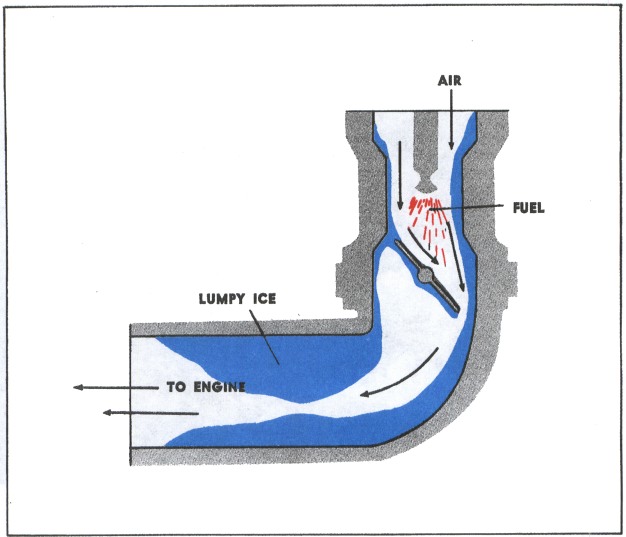Aviation Weather
full text of the classic FAA guide
INDUCTION SYSTEM ICING
Ice frequently forms in the air intake of an engine robbing the engine of air to support combustion. This type icing occurs with both piston and jet engines, and almost everyone in the aviation community is familiar with carburetor icing. The downward moving piston in a piston engine or the compressor in a jet engine forms a partial vacuum in the intake. Adiabatic expansion in the partial vacuum cools the air. Ice forms when the temperature drops below freezing and sufficient moisture is present for sublimation. In piston engines, fuel evaporation produces additional cooling. Induction icing always lowers engine performance and can even reduce intake flow below that necessary for the engine to operate. Figure 95 illustrates carburetor icing.

Induction icing potential varies greatly among different aircraft and occurs under a wide range of meteorological conditions. It is primarily an engineering and operating problem rather than meteorological.
Table of Contents
Previous Section: Structural Icing
Next Section: Instrument Icing
A PDF version of this book is available here. You may be able to buy a printed copy of the book from amazon.com.
